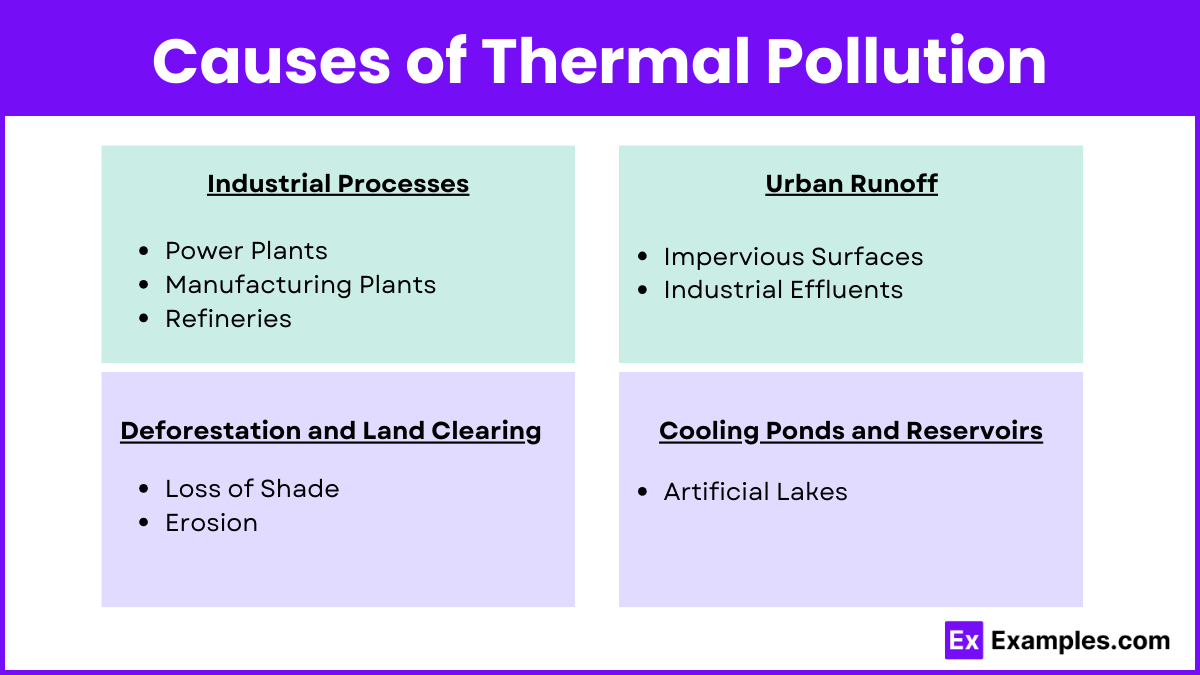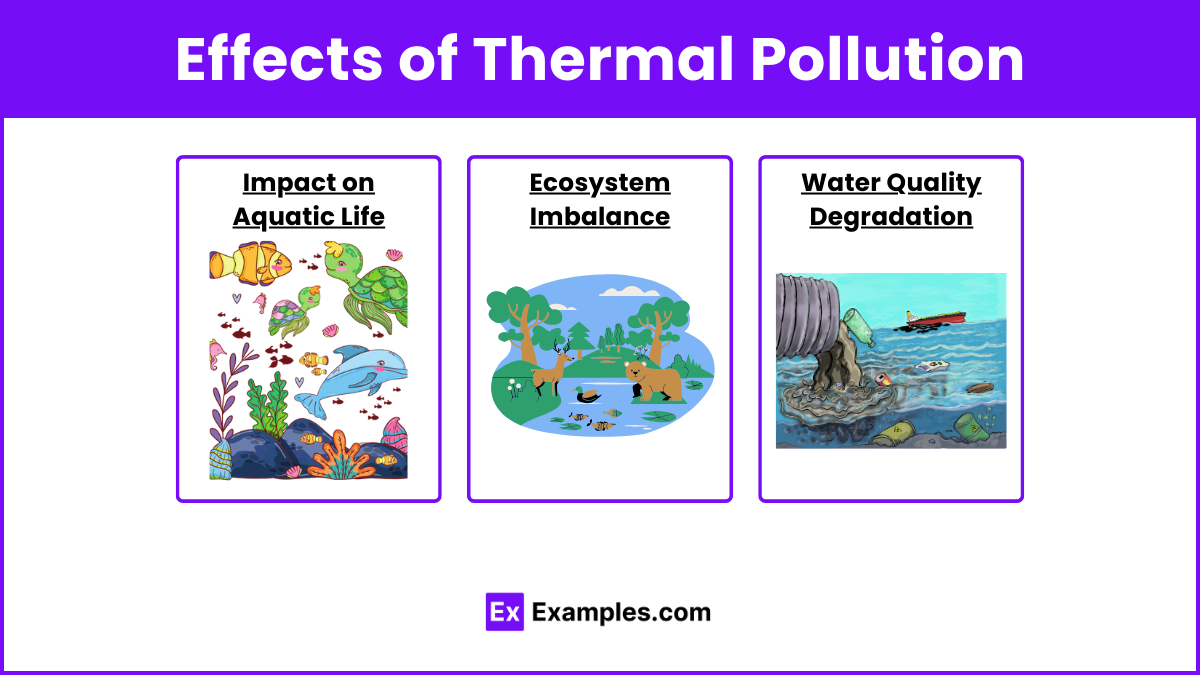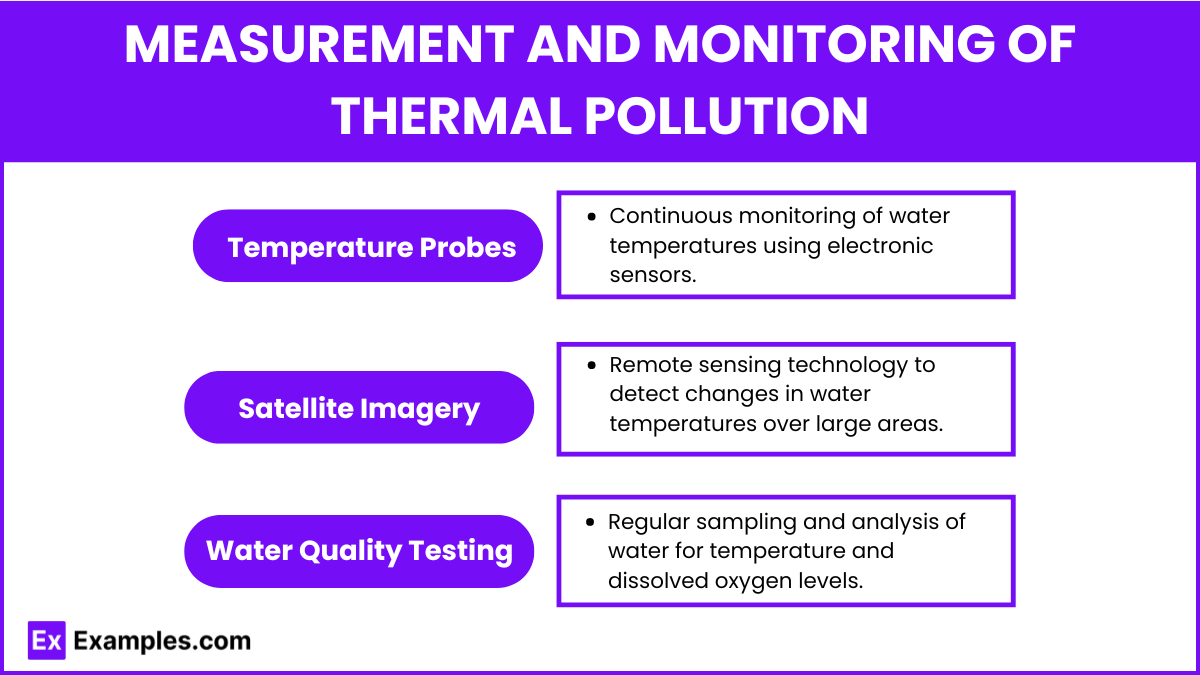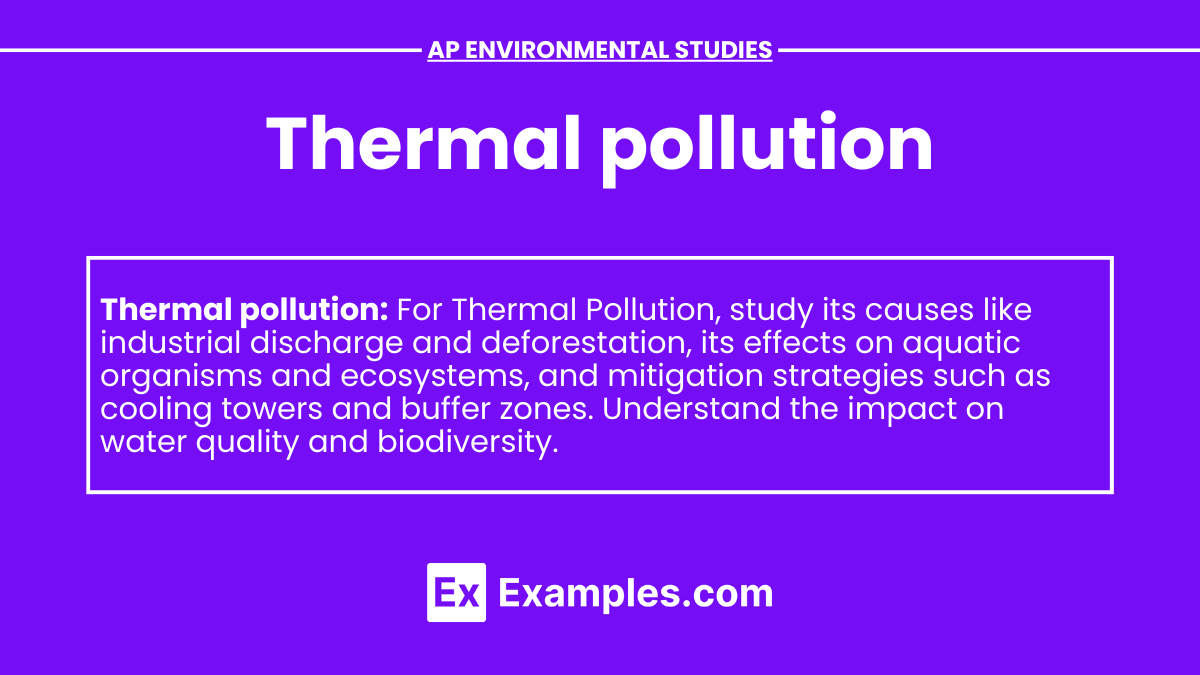Thermal pollution is a significant topic in AP Environmental Science, involving the discharge of heated water into natural water bodies, which disrupts ecology, affects biodiversity, and alters ecosystems within the biosphere. This increase in temperature can decrease dissolved oxygen levels, harm aquatic life, and lead to ecosystem imbalances. Understanding thermal pollution is essential for developing strategies to mitigate its effects and protect the health and stability of our planet’s aquatic ecosystems and biodiversity.
Learning Objectives
By studying thermal pollution, students will understand how heated water discharges affect organisms, including flora and fauna, and contribute to climate changes. Learning objectives include analyzing the impact on aquatic ecosystems, identifying sources of thermal pollution, and evaluating its effects on water quality and biodiversity. Students will also explore mitigation strategies to protect organisms and maintain ecological balance, ensuring the health of both flora and fauna in affected environments.
Causes of Thermal Pollution

Industrial Processes
- Power Plants: Nuclear, coal, and gas power plants use water as a coolant and discharge warm water back into rivers or lakes.
- Manufacturing Plants: Factories often release heated water used in various cooling processes.
- Refineries: Petroleum refineries discharge large volumes of hot water into nearby water bodies.
Urban Runoff
- Impervious Surfaces: Roads, rooftops, and parking lots absorb heat and increase the temperature of storm water runoff.
- Industrial Effluents: Wastewater from industries, even if not hot, can warm up water bodies.
Deforestation and Land Clearing
- Loss of Shade: Removing vegetation along waterways reduces shading, increasing water temperatures.
- Erosion: Increased soil erosion from deforested areas can result in sedimentation that absorbs more heat.
Cooling Ponds and Reservoirs
- Artificial Lakes: Created to cool industrial processes, these bodies of water can warm significantly and transfer heat to natural water systems.
Effects of Thermal Pollution

Impact on Aquatic Life
- Reduced Dissolved Oxygen: Warmer water holds less oxygen, stressing aquatic organisms.
- Thermal Shock: Sudden temperature changes can be lethal to fish and other aquatic species.
- Altered Metabolism: Higher temperatures can increase the metabolic rate of aquatic organisms, leading to higher food consumption and waste production.
- Breeding Patterns: Changes in temperature can disrupt breeding cycles and reduce reproductive success.
Ecosystem Imbalance
- Species Composition: Heat-tolerant species may thrive while sensitive species decline, altering the food web.
- Invasive Species: Warmer waters can become habitats for invasive species that outcompete native species.
- Algal Blooms: Elevated temperatures can promote the growth of harmful algae, leading to eutrophication.
Water Quality Degradation
- Chemical Reactions: Increased temperatures can accelerate chemical reactions in water, potentially leading to the formation of harmful compounds.
- Sedimentation: Higher temperatures can increase sedimentation rates, reducing water clarity and quality.
Measurement and Monitoring of Thermal Pollution

- Temperature Probes: Continuous monitoring of water temperatures using electronic sensors.
- Satellite Imagery: Remote sensing technology to detect changes in water temperatures over large areas.
- Water Quality Testing: Regular sampling and analysis of water for temperature and dissolved oxygen levels.
Mitigation Strategies for Thermal Pollution

Regulatory Measures
- Permits and Standards: Enforcing limits on the temperature of industrial discharges.
- Thermal Pollution Guidelines: Setting maximum allowable temperature increases for water bodies.
Technological Solutions
- Cooling Towers: Used by power plants and industries to dissipate heat before releasing water.
- Heat Exchangers: Systems that transfer heat from wastewater to cooler fluids.
- Artificial Wetlands: Constructed wetlands can absorb and dissipate heat naturally.
Sustainable Practices
- Buffer Zones: Planting vegetation along waterways to provide shade and reduce temperature.
- Green Infrastructure: Implementing green roofs, permeable pavements, and urban green spaces to reduce runoff temperatures.
- Recycling and Reusing Water: Industries can treat and reuse water to minimize the volume of heated water discharged.
Public Awareness and Education
- Community Programs: Educating the public and industries about the impacts of thermal pollution and ways to reduce it.
- School Curricula: Incorporating topics on thermal pollution and its mitigation into educational programs.


